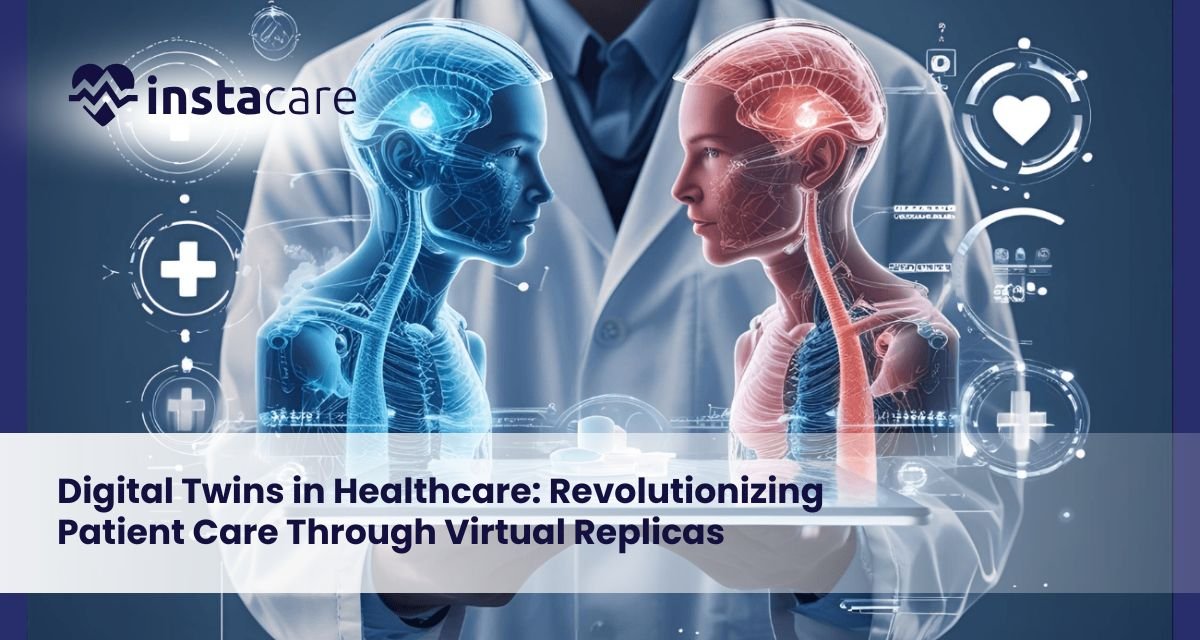Last updated on Thursday, 9, October, 2025
Table of Contents
Digital Twins in Healthcare: Revolutionizing Patient Care Through Virtual Replicas
Healthcare stands at the threshold of revolution when virtual replicas of patients, organs, and hospitals are redefining medicine. Digital twin technology, originally formulated for application in manufacturing and aerospace, is now redefining clinicians’ diagnosis, treatment planning, and outcome prediction for patients. With dynamic, data-driven virtual models, digital twins enable a degree of precision never before attainable in patient care as well as medical research.
What Are Digital Twins in Healthcare?
Healthcare digital twins are virtual copies of physical assets patients, organs, medical equipment, or healthcare facilities in general operated with real-time inputs. Static representations of health simulation, rather than dynamic copies, do not do that. Dynamic copies of these physical assets develop simultaneously with the physical assets themselves, with inputs from medical images, wearables, electronic health records, and biosensors.
A patient digital twin can integrate genetic information, behavior, medical background, and real-time physiological feedback to develop a complete virtual representation to mimic treatment scenarios and predict disease development with no risk to the actual patient.
How Digital Twins Work in the Healthcare Ecosystem?
Digital twins work by utilizing advanced fusion of technologies and data sources:
Data Integration and Aggregation: The construction begins with the aggregation of data from wearable biosensors, electronic health records, lab data, medical imaging, and genomic sequencing. Healthcare IoT and digital twins exist in a romantic marriage wherein connected devices exchange real-time physiological information in streams to the virtual model.
Model Building and Renewal: Advanced algorithms convert this information into virtual copies of high fidelity. Digital twins never become disassociated from their physical counterparts as do conventional models, due to continuous data sharing keeping them current with shifting conditions.
Simulation and Analysis: Healthcare simulation models facilitate the simulation of intricate scenarios. Doctors are able to trial different treatment plans and predict outcomes before they are applied to actual patients through an iterative refinement process.
Applications of Digital Twins in Healthcare
Applications of digital twins in healthcare encompass almost all aspects of modern medicine:
Personalized Medicine: Digital twins for personalized medicine create personalized copies of patients in such a way that physicians can design treatment based on the patient’s unique genetic and physiological makeup.
Surgery Planning: Surgeons plan surgery with the help of digital twins in surgery planning in order to practice complex surgeries on virtual twins. Cardiovascular surgeons can experiment with different methodologies on a patient’s digital twin heart by simulating the process of drilling, reducing surgical risk.
Patient Monitoring: Digital twins for patient monitoring enable real-time tracking of patients’ health and pre-diagnosis of illness by analyzing changes in physiological patterns.
Medical Device Development: Digital twins for medical device innovation accelerate the development process by enabling virtual testing on different populations of patients at lower costs and enhanced safety.
Drug Discovery: Digital twins in medical research accelerate drug development by enabling the capability to conduct virtual trials on virtual patients.
Hospital Operations: Digital twin hospitals achieve the utmost resource utilization, patient flow, and operational efficiency by enabling the simulation of multiple scenarios.
Book Your Free Marketing Consultation
Benefits of Digital Twins in Medicine
The benefits of digital twins in healthcare are revolutionary:
Increased Accuracy: Digital twins enable treatments to be personalized for specific patients, considerably improving outcomes and reducing side effects.
Risk-Free Trials: Doctors can try out different treatment options virtually without endangering patients.
Early Diagnosis: Ongoing monitoring detects health conditions early before they can be treated most effectively.
Improved Surgical Outcomes: Surgeons conducting operations on patient-specific digital twins do so with fewer complications and improved results.
Accelerated Research: Virtual trials significantly reduce the time and expense of medical research and improve safety.
Improved Operations: Hospital digital twins improve efficiency, reduce wait times, and maximize use of resources, hence reducing health care costs and boosting patient satisfaction.
Challenges and Limitations
As promising as digital twin technology is, there are challenges of digital twin technology in healthcare that are plentiful:
Data Quality and Integration: Digital twins require high volumes of high-quality data. Medical systems suffer from most of them being plagued by data fragmentation and interoperability issues.
Privacy and Security: Personal health data is gathered by digital twins, making them financially rewarding targets for cyberattack.
Computational Complexity: Sophisticated digital twins must be built with immense computational capabilities out of the reach of most organizations.
Cost and Infrastructure: Installation has enormous hardware, software, and trained staff costs.
Future of Digital Twins in Healthcare
Future of digital twins in healthcare bring disruptive innovation:
Whole-Body Digital Twins: Future designs will incorporate multiple organ-specific twins into composite models to enable global health management.
AI-Powered Monitoring: Digital twins and AI in healthcare will enable digital twins to monitor patients autonomously and predict health events.
Precision Prevention: Digital twins will enable preventive treatment by detecting risk factors decades in advance before problems arise.
Real-Life Applications: Some real-world examples of digital twins in healthcare are the Living Heart Project, which is employed in cardiovascular disease research, and digital twin hospitals by Siemens Healthineers. The European Virtual Human Twin project attempts to create holistic digital twins for personal medicine.
Conclusion
Digital twins represent a paradigm change from population-based, reactive medicine to proactive, individualized health care. While there are extremely challenging problems in data integration, privacy, validation, and expense, the value potential makes digital twins one of technology’s greatest promises to healthcare. As computer power rises and artificial intelligence continues to improve, digital twins will be a part of medical mainstreaming, transforming disease prevention, diagnosis, and treatment.
FAQs
How well do digital twins predict the patient outcome?
Accuracy varies by data quality and model sophistication, but advanced digital twins can predict the outcome as accurately as 80-90%, increasing incrementally with the addition of each data set.
Are hospitals already using digital twins?
Yes, the majority of the world’s top medical centers already use digital twins to preplan surgery, treat chronic disease, and optimize operations, but mass deployment is at hand.
Will digital twins replace doctors?
No, digital twins are decision-assistance devices that complement but do not replace clinical knowledge, the information enabling doctors to make more informed decisions.



